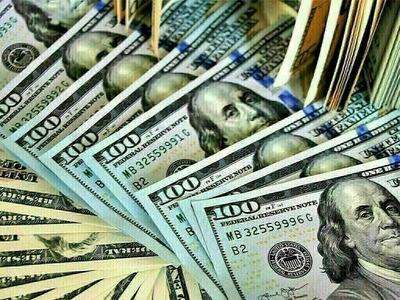Dollar Rebounds Amid Trade Tension Hopes and Fed Stability
NEW YORK: The U.S. dollar exhibited a slight recovery against major currencies on Wednesday, spurred by optimism regarding potential de-escalation in trade disputes and President Donald Trump’s softened stance on dismissing the Federal Reserve’s chairman, which provided some reassurance to investors.
The Wall Street Journal reported that the White House is weighing the option of reducing tariffs on Chinese goods to ease trade friction, bolstering the dollar’s performance against the euro and Swiss franc.
Market anxiety has been high this week due to concerns about the Fed’s autonomy, following President Trump’s repeated criticisms of Chair Jerome Powell for not lowering interest rates since Trump took office in January.
Trump’s tone shifted on Tuesday when he stated, “I have no intention of firing him,” while expressing his desire for Powell to be “a little more active” in pursuing interest rate reductions.
Lee Hardman, a senior currency analyst at MUFG, noted that Trump’s “outright denial” of plans to fire Powell offered a positive signal for the markets.
Trump and Treasury Secretary Scott Bessent separately indicated the possibility of easing trade tensions between the U.S. and China, suggesting that a trade agreement could lead to substantial tariff reductions.
These developments encouraged investors to return to the dollar, which has been trading near three-year lows and whose safe-haven status had been questioned due to the potential economic impact of Trump’s trade policies.
The U.S. dollar index experienced a rapid increase during Asian trading hours but has since stabilized, reflecting ongoing market sensitivity. It was last down by 0.106% at 99.46.
The euro weakened by 0.51% to $1.1362, retreating from the $1.15 level seen earlier in the week, which marked a roughly 3-1/2-year high.
Recent surveys indicate a slowdown in euro zone business growth, with Germany’s private sector experiencing contraction this month, affected by issues in the service sector and trade-related uncertainties.
According to Kyle Chapman, FX markets analyst at Ballinger Group, “The uncertainty and anxiety emanating from the U.S. appears to be impacting growth in Europe more quickly and aggressively than expected.”
The dollar rose by over 1% against the yen, reaching 143.21 in early trading, and was last up by 0.53% at 142.37. Against the Swiss franc, the dollar was last 0.84% higher at 0.8257, after increasing by more than 1% earlier in the Asian session.
Despite the attempted recovery, the dollar remains close to its multi-year lows against the euro and the Swiss franc, and its seven-month low against the Japanese yen.
Analysts anticipate continued shocks that will exert downward pressure on the dollar, followed by subsequent rebounds.



Comments (0)
No comments yet. Be the first to comment!
Leave a Comment